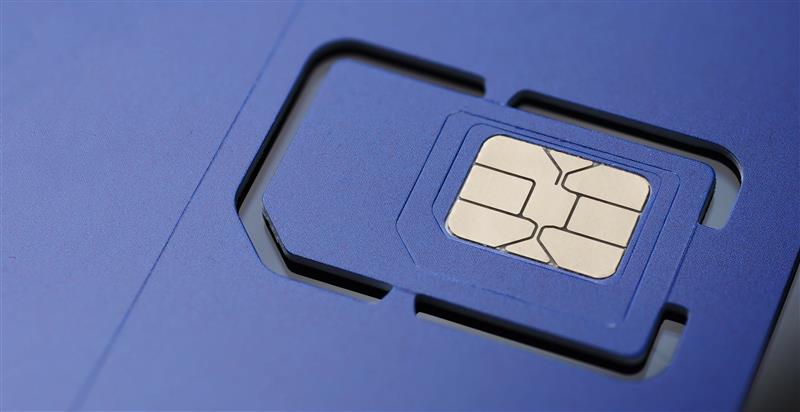Here’s where so many go wrong in IoT. They think all they have to do is connect the sensor, but they have no idea what’s going to happen to their data the minute they turn the sensor on.
In this episode, Nick interviews Vernon Turner, Founder & Chief Strategist at Causeway Connections, about the 2 ways your IoT project can fail: Time to value and Synced systems.
What they talked about:
- What to do with the data you collect
- Set a goal to save or improve by just 1%
- Vernon’s best security advice
- Becoming a founder in the IoT industry
Subscribe to IoT Leaders
Ready to take the mic?
Join us on the IoT Leaders Podcast and share your stories about IoT, digital transformation and innovation with host, Nick Earle.
Transcript
Nick Earle (00:00):
Welcome to the IoT Leaders podcast with me, your host, Nick Earle, CEO of Eseye, and I’m delighted, in this episode, to introduce Vernon Turner. Hello Vernon, how are you?
Vernon Turner (00:12):
I’m good. I’m good, Nick, how are you doing?
Nick Earle (00:14):
Yeah. Good. Thank you. Thanks for being my guest today. And Vernon has got a great career, and has started off in programming, financial services, was at IDC, the research company on the East coast of the U.S., which is where he is now, for 18 years, ended up as senior research fellow for IDC, and actually around the… Headed up the IDC IoT practice. So, very relevant to this job.
Nick Earle (00:47):
He then went to Cisco for a while and now runs his own business. So, a very broad view and a great contributor to this whole theme of the podcast, which is demystifying it. What’s the lessons learned? And how can we act as a guide to people, as how to successfully design and implement IoT projects?
Nick Earle (01:12):
So, I couldn’t think of anyone who has such a broad experience as yourself. I’m setting you up here, Vernon, for some fantastic content. But, you know, let’s get going. I said in the intro that you have this varied background. Maybe just to introduce yourself and give some idea to the listeners of the sort of roles you’ve done throughout your distinguished career. Vernon, over to you.
Vernon Turner (02:23):
So, thank you, Nick. I’ve been in this industry a long time, and it’s interesting, at the various stages of my career everything has come down to the fact that it’s all about the data, whether it’s in the financial services and you’re trying to figure out a billion dollar transaction here, wire transfer. Did it get from me to you, Nick? Or did it disappear in the network? Did it slow down? Was there latency issues? So, really, really complex problems that are hard to scale.
Vernon Turner (02:57):
When you think of the work at IDC the whole idea of building the IoT practice is one that we looked at carefully and said we need to look at every element of the IT stack, from semi conductor, the network, into the cloud, because customers are going to build new solutions, taking their enterprise infrastructure, and whether they process the applications on the enterprise or in the cloud, they’re going to move a lot of that stuff to the edge.
Vernon Turner (03:33):
And the edge, to me, is something I have looked at for about eight years now. At IDC, I felt there’s something going on here that I wasn’t comfortable with, Nick. You know, I asked CIOs, I said, “We’re going to build these systems at the edge of the network. We’re going to take your applications out of the nice, warm security blanket, and put them on the factory floor, or on a ship, or on an oil well. What are you going to do with that data?”
Vernon Turner (04:05):
And I almost pulled my hair out with the answers. They looked at me and were like, “We’re just going to keep it.”
Vernon Turner (04:13):
And I said, “How? Where are you going to keep it? What are you going to do with it?”
Vernon Turner (04:17):
And I think, Nick, that, to me, is one of the driving forces why I love this so much. It’s like there’s so much “legacy lessons” that we have learned from the enterprise that we could easily apply to the edge, and it’s this learning curve of bringing everybody along and standing back and saying, “Have you thought about resiliency? Have you thought about latency? Have you thought about security? Oh, and have you thought about what are you going to do with that data that you wanted to create in the beginning?”
Nick Earle (04:50):
And where in the network topology it needs to be, where it’s at rest, stored, where it moves. And I agree with you, we’d like to think that having learned these lessons with a centralized model, the mainframe which becomes decentralized to minis and very much decentralized with PCs, phones, whatever, that when it came to the edge, the IoT edge, we’d say we know what the model is.
Nick Earle (05:20):
But absolutely, an awful lot of people start off with IoT projects and just really don’t know what to do with the data or what data they need. And because the amount of data collected at the edge is just exponentially bigger, isn’t it? Because the nature of the edge, it’s not just your employees or your customers. We’re not talking your products, things. So, the edge is many, many times bigger than everything else added together, in terms of possible points where you could collect data, which gives a lot of challenges. Doesn’t it?
Vernon Turner (05:56):
It does. It does. You know, whether it’s a billion things that will get connected, or whatever the number is, it’s going to be massive. And I think you framed it really, really well because traditionally we have had thousands, or maybe even hundreds of thousands of end points.
Nick Earle (06:17):
End points, yeah. We thought they were the end, but they’re actually now midpoints.
Vernon Turner (06:20):
Right. So, one of the difficulties was with any of the IoT projects that I see is that, no disrespect to our teenagers, if we have teenagers or even people in their twenties, everybody thinks that an IoT project is “I simply get a sensor, and I’m going to connect it”. And I stop them right away, and I said, “The minute you connect that sensor, are you ready? It’s almost like a race. Are you ready to know what to do with that data?
Vernon Turner (06:58):
And then the argument I make about teenagers is I remember one of our children, when she was 17, 18, she could have easily connected a sensor at home, and then either thinking, “Well, I’ve done a really good, cool thing, Dad. The refrigerator doors open.” Not knowing that, that she’s opened up the whole home of the vulnerabilities of what’s out there on the network.
Vernon Turner (07:23):
The same thing happens on the industrial commercial side, Nick. I asked customers and clients, I said, “Have you lost your marbles? I mean, have you understood that the minute you turn this on do you know what’s going to happen to your data?” And that’s one of our taglines in our company. We talk about we start your journey with IoT, but quickly connect you to the bigger business outcomes because I think not knowing what that data can do for you is an issue.
Vernon Turner (07:55):
So, let me give you an example. One of the exercises that I’ve done to try and justify an IoT project for customers is to stand back and say, “How much improvement are you looking for? Are you looking for 10%? Are you looking for 20% improvement on efficiency, reduction of cost, whatever?”
Vernon Turner (08:23):
And they really don’t know. And I’ve shared this exercise with many customers. I said, “Well, let’s take a look at 1%…”
Nick Earle (08:32):
Right.
Vernon Turner (08:32):
“What would 1% improvement of your business expenses, because you’re running an IoT application…”
Nick Earle (08:45):
Yeah.
Vernon Turner (08:45):
… “or a suite of application.”
Nick Earle (08:47):
So, in other words, if you accept the principle that IoT generally the use of that data, which as you say is a hard one, but if we could capture that data, if you could use that data, and if that then translated through to a business outcome that saved you just 1% of something that’s critical to your company, what could that be worth? That’s what you’re talking about.
Vernon Turner (09:07):
Yeah.
Nick Earle (09:09):
Right.
Vernon Turner (09:10):
There’s always the way that says, if you say to somebody, “Can you save me a million dollars?”
Vernon Turner (09:16):
We’ll say, “No, but I can find a million ways to save you one dollar.”
Nick Earle (09:21):
Right.
Vernon Turner (09:21):
I mean, that’s almost the same argument. What I say is, “Forget the 10%, 20% because those are big, audacious goals.”
Nick Earle (09:31):
Yeah.
Vernon Turner (09:31):
“Unreal. Let’s start with 1%.”
Vernon Turner (09:35):
And in many ways, it opens up their eyes because if IoT can save them 1% of the factory floor cost I then ask them, I say, “Okay, so what was your profit last year? What was your profit in the company?”
Vernon Turner (09:52):
And often, the 1% savings in some multinational corporations is easily equal to 10 or even 15% of increased profits or sales to them.
Vernon Turner (10:08):
Take it a little further on more, I’ll call it more sustainable. We have seen projects where… And in the U.K., for example, I’ve seen it last week, where the water leakage from the water systems, because we built these… We learned a lot from the Romans, how to build water aquifers and deal with it, but we didn’t figure out how to update them since the Roman times.
Nick Earle (10:38):
Yeah. I know.
Vernon Turner (10:38):
So, they’re leaking. All the infrastructure’s leaking, and I did the same thing in the U.S. here, and I looked at the amount of water leakage, and I simply said if there was IoT sensors that could show, predict, and stop the water leakage what would be outcome? And Nick, it would equate to 30% of all the domestic usage in the U.S., 1%.
Nick Earle (11:00):
You know, Vernon, we talked about this in other podcasts, and the whole point of about getting to the business outcome and looking at the payback for IoT is not so much in selling IoT cool gadgets with smart features. A lot of people think, “If I have these features I could sell more.” But that’s really not the payback, because as you’re putting out, it’s the payback is in the optimization of backend processes.
Vernon Turner (11:32):
Yeah.
Nick Earle (11:32):
And in our own part of IoT, we provide ubiquitous connectivity, a global cellular connectivity from a single SIM embedded on the board of a device so it can go to any network, and you never have to change the SIM card. But the point about that, in relation to the point you just made, is what does that enable you to do?
Nick Earle (11:55):
Well, it enables you to create a single product SKU, as a manufacturing company, that you can just shift, or ship, all the way around the world, sell through retail, and not have to have an installer or a customer insert a SIM, or change the SIM, or anything like that, which means that you actually have fewer SKU. So, you have a single SKU.
Nick Earle (12:19):
So, for example, Bosch, which as you were speaking I was thinking of that. You know, Bosch have robotic lawnmowers. We’re just talking here, as we come into spring in 2021, and they’re ramping up their lawnmower production, but they have a single product SKU. And so… And they sell it through retailers in about 50 or 60 countries. It’s the same product. That’s the point. It’s the same product, and it’s IoT enabled, and what that means is their savings on their manufacturing, their supply chain, their warranty process, because they can communicate with the device, and it’s always the same device, the same firmware in the device, those savings are absolutely enormous and absolutely dwarf the revenue actually that they can get from selling more IoT enabled lawnmowers versus somebody else’s IoT enabled lawnmower.
Nick Earle (13:19):
So, I think your point is a good one, is that one of the key things about justifying an IoT project, which you must’ve been involved a lot in, in IDC, is actually looking in the right place for the ROI, and the ROI is in the optimization of backend company processes.
Vernon Turner (13:37):
Yeah. So, you raise two very important points for me. One is that there has to be a time to value that customers really, really accept. We’ve seen these numbers, even from Cisco, in doing studies and other companies that would say 80% of all IoT projects fail.
Nick Earle (14:01):
Fail.
Vernon Turner (14:02):
They look at a proof of concept. And the argument there, for me, is one that when we’re scoping out these projects, particularly if you’re in the operational technology side, or any type of business, if it takes too long to implement, if it’s too difficult to get the outcome, and this is where I categorize it as the time to value, if customers don’t see this down, this implementation, very quickly so they can start to reap that benefit then these projects are almost dead on arrival, and I don’t think that’s well thought out of because it goes back to the idea anybody can do this. Let’s just plug it in and see what happens.
Nick Earle (14:51):
Right.
Vernon Turner (14:52):
The thing is… The second point is they don’t really appreciate the difficulty of the backend processing that has to be integrated into this.
Nick Earle (15:03):
Yes.
Vernon Turner (15:04):
And Nick, you and I have talked about digital transformation and becoming a digital company for many years now. The one thing I look at, the one thing I look at when I talk to CIOs, I ask… And the question is, “You have an IoT strategy, and you have a quote/unquote digital transformation strategy. Are they connected? Are they in sync with each other?” Because IoT strategy will expose the data silos and the lack of transparency that customers are going to want to have when you go down this journey and become a digital company.
Vernon Turner (15:50):
Because, what will happen is you’ll create more and more data silos. After all, you and I talked about it, we’re going to create data.
Nick Earle (15:57):
Yeah.
Vernon Turner (15:58):
Now, for me, issues that these enterprises with the backend systems, need to… Play a sort of very underestimated role here. We’ve got to make sure that there is immediate transparency between these divisions in the company, these groups in the company, who have the data. And the reason why is very simple. We’re going to move from what I call a make-and-sell concept, where you make a product like the lawnmower, and you sell it to you and me, and that’s the end of the relationship, to an equal system of a sense and response with the customer in the middle. The customer’s going to know, real time, how well the lawnmower is doing. Is it breaking? Is it broke or is it not? But if it’s broken, the repair system, the supply chain management, predictive maintenance, preventative maintenance, field service engineering, all of that has to come together almost real time. And that’s a different experience…
Nick Earle (17:13):
Yeah.
Vernon Turner (17:13):
… that customers have. And in your particular case, multiply it onto a global network, onto IoT assets that move around. Those systems have to be in sync with each other. That’s, to me, is a fundamental question I ask the IOs is… Straightforward question, if the answer is no, I’m not a very good salesman. I pack up my bag and go because this is going to be a failure project. This is not going to work out.
Nick Earle (17:45):
It’s such a tough problem for customers, isn’t it? Because every time you delve a bit deeper in IoT you get more advice from everyone, ourselves, everybody else, everyone’s saying, “Well, you need to think about this. You need to think about that.” It’s sort of like the IoT iceberg. It’s actually almost TOI, top of the iceberg, like IoT. You know, it’s the IoT iceberg. Either it looks great, probably I could do that. That would be cool. And then you look underneath and all those things are under the waterline, and what you’re saying is if you don’t fix those and align those to your IoT strategy you’re actually going to create a worst experience for your customers, and they’ll hate you for it, and they might never forgive you. They may leave you.
Vernon Turner (18:35):
Yeah.
Nick Earle (18:35):
Because just by fixing the bit above the water, but leaving the old processes that are based on doing things in the non IoT way, is actually going to make the problem worse.
Vernon Turner (18:48):
Right.
Nick Earle (18:49):
And you just get all this data, and the customers say, “But I told you that. You’ve got access to it.” It’s the old phoning the call center, and you’ve got a question, say, “Oh, I can’t answer you. I’ll transfer you.” So, you’re waiting, you listen to some awful music, and then somebody says, “Hi. Hello, can I help you?”
Nick Earle (19:04):
You say, “Yeah, it’s about my conversation I’ve just had.”
Nick Earle (19:07):
And they say, “Sorry, what’s your name? No, they did brief you when they transferred the call, right?” And of course, they’re completely siloed. They’ve implemented a call center, but all the backend assistants are all completely siloed, and what you suddenly realize is there’s no common definition of the customer.
Nick Earle (19:25):
So, it is a problem that we’ve been dealing with for years, but some people are really getting through it and being successful. And I want to go back and talk about something that you raised earlier on, which we just touched on, but I think listeners would want us to double click on, and that’s the issue of security.
Nick Earle (19:45):
So, let’s assume for the moment that you’ve got a project. You think you know what the 1% is worth.
Vernon Turner (19:52):
Yeah.
Nick Earle (19:53):
I think we can get 10 million dollars, and I want approval to spend 100,000 dollars giving it a go. And you’ve worked out your data model. You know what data stays at the edge, what data has to be back holed or sent backwards, the meta data perhaps. What data should be stored? What data doesn’t get stored?
Nick Earle (20:17):
So, you’ve got your model. You’ve got your plan, and then the CISO, the chief information security officer, says, “Hold on a second. I just want to check. Are you saying that all these things, these devices, are going to have an IP address, and are they going to be secure?”
Nick Earle (20:35):
In other words, I hear stories, I don’t know, solar winds or whatever it is, people hear these stories of devices with password, 1, 2, 3, 4 or getting hacked, and people tunneling back in because you’ve expanded the threat perimeter massively with IoT.
Vernon Turner (20:55):
Right.
Nick Earle (20:56):
And there was a big debate in the industry around mobile phones, cell phones, when it was bring your own device. And I said, “No, you need to have a company device because I need to put security on the device.”
Nick Earle (21:08):
And people talk about agentless security, the sniffers that sense what’s there, and then give you security of the devices without you having to put a piece of software on the device. The problem with IoT is that you can’t see these devices because they’re not wired with an ethernet cable to your network. They’re going… They’re connecting via the telecom companies, say Verizon. Verizon is then connected to an MVNO like us. We’re then taking that data, and we’re putting it into the cloud, and we’re sending it to the enterprise. So, you can’t use a sort of network sniffer. So, you put all these devices, can in theory, become compromised.
Nick Earle (21:52):
Now, I’m building up to asking you a completely impossible question because we know the industry hasn’t solved this. But what is your advice in general, based on your experience, either in your 18 years at IDC and your Cisco experience or your new company Causeway Connections, which we’ll come onto? What is your experience and advice really, is what I’m saying? What is your advice to people about how they go about that?
Vernon Turner (22:18):
Yeah.
Nick Earle (22:19):
Because you can’t ignore it.
Vernon Turner (22:21):
No, and for a long, long time, every time at IDC, or even my independent surveys, when you ask customers what’s the most important fact or what’s the most important inhibitor to do on an IoT project? And the ones that would get it would say security.
Nick Earle (22:44):
Security.
Vernon Turner (22:45):
So, there is a mindset that says, yeah. But I think the issue, again, is there’s this… There is something about IoT that give people a weird sense of, I’ll call it security, because they say, “Well, it didn’t cost much. I mean, this sensor was…” I’ll say 100 dollars, because I’ve seen some sensors that are 100 dollars.
Vernon Turner (23:11):
It’s still only 100 dollars. If I’m a big enterprise customer it’s not a lot of money, therefore, everything should be okay. I think the argument is they underestimate the damage that could be done with a $100 sensor that’s connected to your network. So, I think what happens is there’s no validation done by customers when they buy the sensor themselves.
Nick Earle (23:38):
Yeah, especially off the shelf products, which we’ve seen, by the way. In Eseye, we’ve seen off the shelf products. I won’t name the supplier, but we’ve seen off the shelf products that transmit the data to certain countries in the far East without you knowing it.
Vernon Turner (23:56):
Yeah.
Nick Earle (23:57):
And they are available on the internet, and they’re very cheap, and there’s a reason why. There is firmware, spyware, whatever inside those devices. Yeah.
Vernon Turner (24:09):
The second is…I mean both of us have some network background. So, the idea of creating segmentation in your network infrastructure is fundamentally a key mistake for anybody building out an IoT solution.
Vernon Turner (24:25):
So that, for example, on the factory floor, if you’ve got a robotic arm that robotic arm is doing certain tasks. It’s collecting data all day long. Now, the question is who sees that data? And you want to be able to segment or fence that robot in a productive manner that says, if you’re KUKA’s robotic arm, then anybody that interacts with KUKA’s and the robotic arm are the only people that should have access to that data.
Vernon Turner (25:03):
Once a virus or attack comes in… And if you don’t… If you only have flat networks, then kiss everything goodbye because your virus system go everywhere. And I think people forget the fundamentals of network security. So, it should be segmented. I think the sensor, at the gateway, into the cloud or onto the telecom network, but I really, really think this whole idea of spending time to validate the sensor and create this layered approach of security is the only way you can do it.
Vernon Turner (25:38):
Now, it’s a pain, but I’d rather have the pain up front than trying to dig myself out of some ransomware or…
Nick Earle (25:47):
Right. Which, by the time you see it, they’ve probably… They, whoever they are, you’d probably never find out, they’ve probably been in your network for days, by definition. By the time you see it, it’s too late.
Nick Earle (25:59):
You know, there are some other companies though, generally, in the world of IoT, there are some companies and some new models that is actually making this easier. Because, my point earlier, is that you can never catch the ball that’s bouncing down the stairs. The IoT ball is exploding exponentially, and we’re using linear solutions to try and solve it by trying to put a bit of code on… What you’re talking about is a good way of doing it, the segmentation, but ultimately, when we get to 20 billion things, or 11 today, 50 billion things, 500 billion things, you have to have a different model.
Nick Earle (26:38):
I’m very encouraged by what the hyper scale cloud guys are doing, which is the idea of, if your data goes to the cloud, the idea of central policy management deployed to the edge. So, you set your policy centrally, which is actually what we did in the previous ways of innovation. We set the policy in the mainframe. It was easy to control.
Nick Earle (26:59):
But then, we did, for data centers, you set the policy centrally for virtual data centers, virtual networks, and deploy it automatically to the edge. Just this case, the edge is hundreds of times bigger. But the idea of saying… A simple example, anomaly detection behavior or configuration management process policy set the policy at the center, and then when any device accesses a DNS address that it shouldn’t do.
Nick Earle (27:31):
So, this lawnmower should only access these DNS addresses, or this IPN, or this should only be configured this way, and if anyone changes the configuration do an alert, quarantine it, flag it, and fix it, and then let it back in. I think, even things like that, may not be enough, but certainly, I think the lessons that we’ve learned over the last 10, 15 years, as cloud came to the fore, is that you have got to use software for this, and you’ve got to have mass scalability.
Nick Earle (28:13):
And often, these things are just not capable inside an IT environment inside, even the largest company. You know, I’m sure you found that when you were working in the banks in Boston on the East coast. They spend a fortune on IT, but it’s still hard for them, even with all that budget. Money doesn’t solve this problem alone. You need a different way of doing things.
Vernon Turner (28:40):
I think, Nick, if our listeners go away with one thing, and this is me being selfish here, they go away with one thing today it’d be your comment about security, and it would be this combination of policy and segmentation. And I think the policy one is, again, an undersold attribute that the enterprise guys or the cloud guys have had for years, that customers, again, don’t stop and think about, “I’ve now got 10,000 of these things instead of just 50. What am I… How am I going to secure these in a scalable manner that’s not going to break the bank by having to deploy so many people to do this, that has to be done on a software model for sure?”
Vernon Turner (29:36):
So, thank you for bringing that up.
Nick Earle (29:38):
Well, I think I’m bringing it up because everybody mentions it. First, is I work with AWS, who are a security certification authority, and even Azure who aren’t, but you can access a security certificate separately, they actually create the security certificate. You can program, very simply, your policy as a user, even if you’re not… Because a lot of these people aren’t in the IT department.
Nick Earle (30:03):
The people who are doing IoT are actually often the people who are in the product department. They’re manufacturing the products or they’re the marketing department. So, they don’t know about it anyway. So, the idea that you can set your policy very easily, if, this, then, or it could only do this. If it does anything else have it quarantined, stopped, whatever.
Nick Earle (30:23):
The idea of security certificate goes backwards over the network, through the MVNO platform, gets stored inside the SIM itself, the security. Ultimately, what will happen with iSIMs everything is going to get stored inside the silicon, and so the security management is… My contention would be, and many others, would be security is going to be a service provided for us all by companies that have A, global, not regional, and B, have massive scale. And I think the big, large security companies and the hyper scale cloud infrastructures are the best hope we can of not having multiple solar winds, or credit card hacks, or whatever.
Nick Earle (31:14):
I want to make sure that we give you some time to talk about what you’re doing now because after 18 years at IDC, a spell at Cisco, a company I know well because I was there for 13 years, you’ve now got your own company. So, Causeway Connections, why don’t we tell our listeners what that’s all about and…
Vernon Turner (31:39):
Well, thank you. Thank you, Nick. My passion has always been rooted deeply in data and what data can do, both as a business and societal outcome. And what I am doing right now is helping customers decide where in the business stack do they want to go? Culturally, do they have the right to play in IoT? An example of that is one of my customers is an engineering firm that believes they have the right to move into medical devices market space.
Nick Earle (32:27):
Right.
Vernon Turner (32:27):
And we’re in the middle of doing the ROI right now, this is time to value, and it’s interesting because I think one of the hardest pieces for them to accept is cultural shift from selling industrial piece of equipment with a warranty card to becoming a digital company with a seven by 24 deport center, medical device, and then what happens with that?
Nick Earle (32:54):
That’s a big change.
Vernon Turner (32:56):
So, the answer is how do we… Do we move up the stack? The second one is this idea that if we’re not going to move up the stack, and want to move up the stack, should we look at the adjacencies? Who do we partner with so that one plus one for the customer is actually three? Because again, I’m a big proponent of this ecosystem model is going to be the way the customers are going to consume services from us, from you.
Vernon Turner (33:26):
But my goal here is, purely as the advisor role… I’m brought in to give the outside/in opinion, and I use that word very, very carefully because opinion, anybody has an opinion, but what I’m trying to do is bank it on, excuse the pun, bank it on the fact that I’ve worked at vital institutions that have massive scale, heavy transaction loads, large networks to this idea that inside IDC, where I became their first research silo ever in the company on IoT, the idea that understanding from a silicon all the way to the enterprise at the back end is a really, really long journey you need to map out carefully.
Vernon Turner (34:16):
So, I give that outside/in viewpoint.
Nick Earle (34:20):
So, you advise… You advise clients on their IoT projects?
Vernon Turner (34:24):
Yeah. Yeah. And to be honest with you, I do a lot of it based on quantitative work, as just as opposed to just qualitative. It kind of gets back to the opinion. It kind of goes back to the idea that, it’s almost what we’re talking about now, we should believe in the science of pandemics, what the data scientists are saying. And so, my programming background from Cobalt 4, SaaS now are… I would never say I’m a data scientist, but I know enough about data to be able to help our customers make a decision whether this should be a go or no go.
Nick Earle (35:07):
You know, Vernon, from now on, I’m going to think of you as the Dr. Fauci of IoT. But actually…
Vernon Turner (35:11):
There’s so much fodder.
Nick Earle (35:19):
I know. Well, you’ve got to listen to the science, you know?
Vernon Turner (35:23):
Yes, you do. You do.
Nick Earle (35:24):
Yeah. Yeah. But, you know, let’s… Given all of that experience, can you think of an industry… We always sort of like to end the podcast with either who do you thinks doing cool stuff? Or who should we talk to? In your case, I want to ask a difference question.
Nick Earle (35:43):
IoT, we all know, if it was a baseball game, having lived and worked in the U.S. for many years, I actually think we’re at the bottom of the first on IoT, and that’ll make sense to our American listeners, and for everybody else it means in the early stages, very early stages. You ain’t seen nothing yet.
Nick Earle (36:04):
And one of the challenges is that if you think about crossing the chasm and Geoffrey Moore… We’re in the innovators, early adopters, we’re going to cross the chasm, and when you cross the chasm there’s the idea of the bowling pin, the principle, certain industries are ripe for innovation. They tend to go first.
Nick Earle (36:24):
We talked a lot about vending machines, definitely happening in vending machines, medical devices, absolutely, for obvious reasons, tracking telemetry, EV charging. But what else? What other industry do you think? Perhaps it might be fragmented. It might be inefficient, but what other industry do you think is ripe for IoT innovation? What other sector?
Vernon Turner (36:48):
Do I have to put a mask on to answer this question?
Nick Earle (36:53):
As long as you don’t inject yourself with bleach I’m fine.
Vernon Turner (36:57):
So, a really, really good question, Nick. And what’s fascinating to me, is how come nobody… How come no other industry analyst, consultant, advisor has seen this? I’m going to give you a really good opportunity here, for our listeners. Take a look at the construction industry. We have done a lot… You talked about early movers crossing the chasm. We’ve talked about smart buildings. We’ve talked about the whole idea of making the thing green and whatnot, and make it run better.
Vernon Turner (37:34):
I’m going back and saying, okay, how do we construct these things? And Nick, in the U.S., playing the numbers game, it’s about a 1.3 trillion dollar industry in the U.S., of which about 600 million, 700 million, is commercial buildings. The rest are domestic and academic.
Vernon Turner (37:59):
And the reason why I think this industry is ready for disruption and for innovation is a couple things have happened. One is there is a natural shortage of skilled workers in this industry. We’re not sending our children to trade schools as we used to do. Two, there’s a significant lack of automation…
Nick Earle (38:25):
Yeah.
Vernon Turner (38:25):
… in this industry. But the good news is the technology that you and I would follow, whether it be things like IoT, drones, 3-D printing. I’ve actually seen 3-D printing in the construction industry that would blow your mind. So, what’s interesting to me is there’s the technology enablers are mature enough to make a business case to an industry that doesn’t understand IT particularly well.
Vernon Turner (38:56):
And go back to the ecosystem. When you think, when you’re building a large, multi floor tower block, what it takes to make that thing happen is just enormous amount of data, enormous amount of data, that we don’t know enough about.
Nick Earle (39:14):
Yeah.
Vernon Turner (39:14):
And it’s not just about the building itself.
Nick Earle (39:18):
It’s the…
Vernon Turner (39:18):
If you think about…
Nick Earle (39:19):
… infrastructure inside the building, like the…
Vernon Turner (39:20):
Oh, it’s tremendous.
Nick Earle (39:22):
The elevators, or the facilities, the company, the FM… The facilities management company that manages the building, after it’s been built, every single thing will be connected in those buildings.
Vernon Turner (39:34):
Absolutely. So, let me give you an example of one of my clients that I did an early engagement with. They build… They’ve cornered the market for the academic buildings in New England, and they were building 100 million dollar dorm for a large Ivy school in Boston. And he said to me they put 15 to 20%, 15 to 20 million dollars, set aside as contingency, just in case.
Nick Earle (40:09):
Wow.
Vernon Turner (40:10):
Whether that product delays, whatever, because if we could predict what that was going to be when we build models into our bids, if we go back to the 1%, if we could just get some…
Nick Earle (40:27):
Yeah, just get 1% better.
Vernon Turner (40:29):
I mean, it would be amazing. So, you roll out 400 to 600 million dollar business, you can see the savings right away. So, the construction industry, Nick, to me is fertile ground for IoT. It’s fertile ground for a whole host of innovation accelerators that I think we’re going to see because of what I mentioned, automation skills shortages, expense.
Nick Earle (40:56):
Right. Great. A great example, and I’m sure that is absolutely going to come true and be the case, a very fragmented industry that has an opportunity to reinvent itself around data, the use of data. So Vernon, just before I wrap up, and this has been great. Thank you very much. I think we could have probably made this a three times longer podcast, but everyone… I don’t think that’s a pod people would want us to do, at least in one episode.
Nick Earle (41:23):
If people do want to get in touch with you, how do they get in touch with you?
Vernon Turner (41:26):
Oh, easy. There’s three ways. One, I’m always on LinkedIn. You and I are always having a banter on LinkedIn. Two, I try to be sincere on Twitter.
Vernon Turner (41:42):
And of course, you can email me at vernon@causewayconnections.com
Nick Earle (41:49):
Causewayconnections.com? Great. All right. Well listen, let’s see… I hope you’ve enjoyed this episode. I certainly did, and thank you to my guest, Vernon Turner. This is the IoT Leaders Podcast, where we try and bring you people, one guest per show, that has got experience in different parts of IoT, and certainly that was the case today. Now, if you want to get in touch with us, then it’s also simple. The best way is to send an email to iotleaders@eseye.com
Nick Earle (42:26):
And you can just give us feedback, or you can say, “Look, I think this is a subject we want you to go into.” As you found out today, Vernon and I just went into subjects as the conversation flowed, and we’re very, very happy to do that. You may even say, “I really think this person would be interesting to be on the show.” Or maybe you want to be on the show. So please, get in touch, but in the meantime, thank you for listening, and thank you again to my guest, Vernon Turner. Cheers. Thanks, Vernon.
Outro (42:16): Thanks for tuning in to IoT leaders, a podcast brought to you by Eseye. Our team delivers innovative global IoT cellular connectivity solutions that just work, helping our customers deploy differentiated experiences and disrupt their markets. Learn more at eseye.com.
Outro (42:37): You’ve been listening to IoT leaders, featuring digitisation leadership on the front lines of IoT. Our vision for this podcast is to be your guide to IoT and digital disruption, helping you to plot the right route to success. We hope today’s lessons, stories, strategies, and insights have changed your vision of IoT. Let us know how we’re doing by subscribing, rating, reviewing and recommending us. Thanks for listening until next time.

Speed up deployment with a free IoT SIM trial and device assessment kit.
Predictable performance is the key to IoT success. Let our experts test your device for free. Receive a free trial IoT SIM trial kit and speed up your IoT deployment with expert insights and seamless connectivity.






